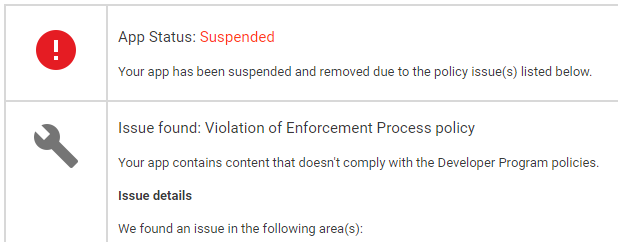As graduation season approaches, many young people stepping out of university are about to begin their professional journeys. However, students from business-related fields often find it challenging to differentiate between roles such as branding, marketing, sales, and operations when seeking job opportunities. Even experienced professionals in these fields can sometimes feel confused about the job content and value contributions of each role.
This article aims to approach the issue from a business essence perspective, analyzing the concepts and roles of branding, marketing, sales, and operations from a systematic standpoint. We will explore how these functions collaborate to drive business success while uncovering their key differences and connections.

1. What is the Essence of Business?
Opinions vary on the essence of business, as different people hold different perspectives.
I believe the essence of business lies in creating, obtaining, and delivering value.
So, what exactly is "value"? I define "value" as the product or service (either tangible or intangible) that meets customer needs. Businesses or individuals design and provide products or services to respond to deep-rooted consumer desires and preferences, solving specific problems in the market and thereby creating unique value.
This value creation process is the starting point of any business activity. It requires a company to deeply understand the market, conduct thorough research and data analysis, and adjust its products or services accordingly to ensure precise alignment with demand. Once value is created, the market mechanism takes effect, and companies transfer their products or services in exchange for currency or other valuable resources, thereby realizing value exchange and generating economic benefits.
The precision of this supply-demand alignment not only determines whether a company can secure a stable foothold in a competitive market but also directly affects its long-term survival and growth.
In short, the essence of business is to create value, meet demand, and achieve effective value exchange in the market, ultimately bringing sustainable economic returns to the company and ensuring the continuous cycle of this activity.
2. Marketing: The Core of Achieving Business Essence
Marketing is central to realizing the essence of business.
Management expert Peter Drucker considered marketing and innovation as the two core functions essential for the survival and development of an enterprise. All other activities, though necessary, are essentially supporting these functions; otherwise, they may be seen as costs rather than value-adding activities.
In his view (which I fully agree with), marketing's essence is understanding the market and consumers, converting potential needs into actual purchasing behaviors, and ultimately creating customers.
This means businesses must deeply grasp market trends and consumer psychology, using effective market research to complete tasks like product positioning, pricing strategies, promotional activities, and distribution channels (the classic 4Ps). By doing so, they ensure that the product is sold and builds a close connection with target customers. From this perspective, marketing is the core process that drives business essence.
Innovation, on the other hand, is key to adapting to the ever-changing market environment, enabling companies to continuously improve and develop new products, services, technologies, and models. Innovation is crucial for satisfying growing and diverse consumer demands and maintaining a competitive advantage. It extends beyond just products and can include service innovation, process innovation, market innovation, and organizational innovation.
Other business activities (such as HR, finance, production, or IT support) are essential for the smooth running of a company but primarily function as supportive modules. They should revolve around marketing and innovation, providing necessary support and ensuring the company's continuous progress.
3. The Differences and Connections Between Marketing, Branding, Sales, and Operations
Some believe that marketing is simply about "setting the stage" for sales through promotional material production and publicity work, treating it as a mere precursor or even subordinate to sales. This viewpoint narrows the true scope of marketing.
As mentioned earlier, marketing and innovation are central to realizing the essence of business. All other activities should revolve around them. Marketing should permeate every aspect of a company's operations, from understanding customer needs, setting brand positioning, designing products, building channels, promoting and selling products, to providing after-sales services. This systematic view ensures that products or services truly meet market demand and create customer value.
From this angle, marketing encompasses branding, sales, operations, and more.
However, due to the prevalent misunderstanding of marketing and the need for specialized roles to improve efficiency, many companies set up distinct departments for marketing, branding, sales, operations, PR, media, content planning, etc.
It's essential for professionals, especially fresh graduates, to understand the value positioning and job requirements of these roles in practice. This knowledge helps them prepare for job applications and better fulfill their daily work responsibilities.
Now, let’s analyze the specific tasks of these roles:
Branding: Branding roles focus on creating, maintaining, and promoting a company's brand. Responsibilities include developing brand positioning, marketing strategies, building brand culture and storytelling, managing brand identity, and monitoring brand assets. Many companies require branding professionals to have skills in project management, content creation, and communication strategy.
Marketing: Marketing roles typically encompass market research, product development, market expansion, and performance promotion. This includes tasks like market surveys, customer interviews, product planning, channel expansion, promotion strategies, and marketing campaigns.
Sales: Sales positions are more familiar to most people. Their core responsibility is actively developing new clients and maintaining existing relationships to achieve and exceed sales targets. Sales tasks include acquiring leads, following up with clients, advancing business processes, understanding customer needs, providing professional consultation, ensuring customer satisfaction, and collecting market information to support company strategy.
Operations: Operations is a broad concept, especially in the context of the digital economy. Its role varies significantly depending on the business scenario and product. In an internet-driven context, operations are seen as enhancing brand value through content creation, SEO, social media management, and data analysis, ultimately driving customer engagement and loyalty.
Conclusion
We can see that despite the specific roles and responsibilities within branding, marketing, sales, and operations, they are all parts of a broader marketing effort. Their ultimate goal is to understand customer needs, create value, and deliver it efficiently to the market.
With the rapid evolution of digital technology, these roles are becoming increasingly intertwined, and specialization in these fields is growing. This demands that professionals in marketing-related roles develop multifaceted skills.
By understanding the essence of business through the lens of marketing, professionals can better plan their careers, grow their skills, and advance their development.






